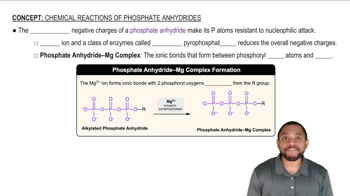a. Without using a calculator, estimate the pH of each of the following solutions:
1. [HO−] = 3.2 × 10−5
2. [H3O+] = 8.3 × 10−1
3. [H3O+] = 1.7 × 10−3
b. Determine the exact pH, using a calculator.
 Verified step by step guidance
Verified step by step guidance Verified video answer for a similar problem:
Verified video answer for a similar problem:



 2:49m
2:49mMaster The Lewis definition of acids and bases. with a bite sized video explanation from Johnny
Start learning